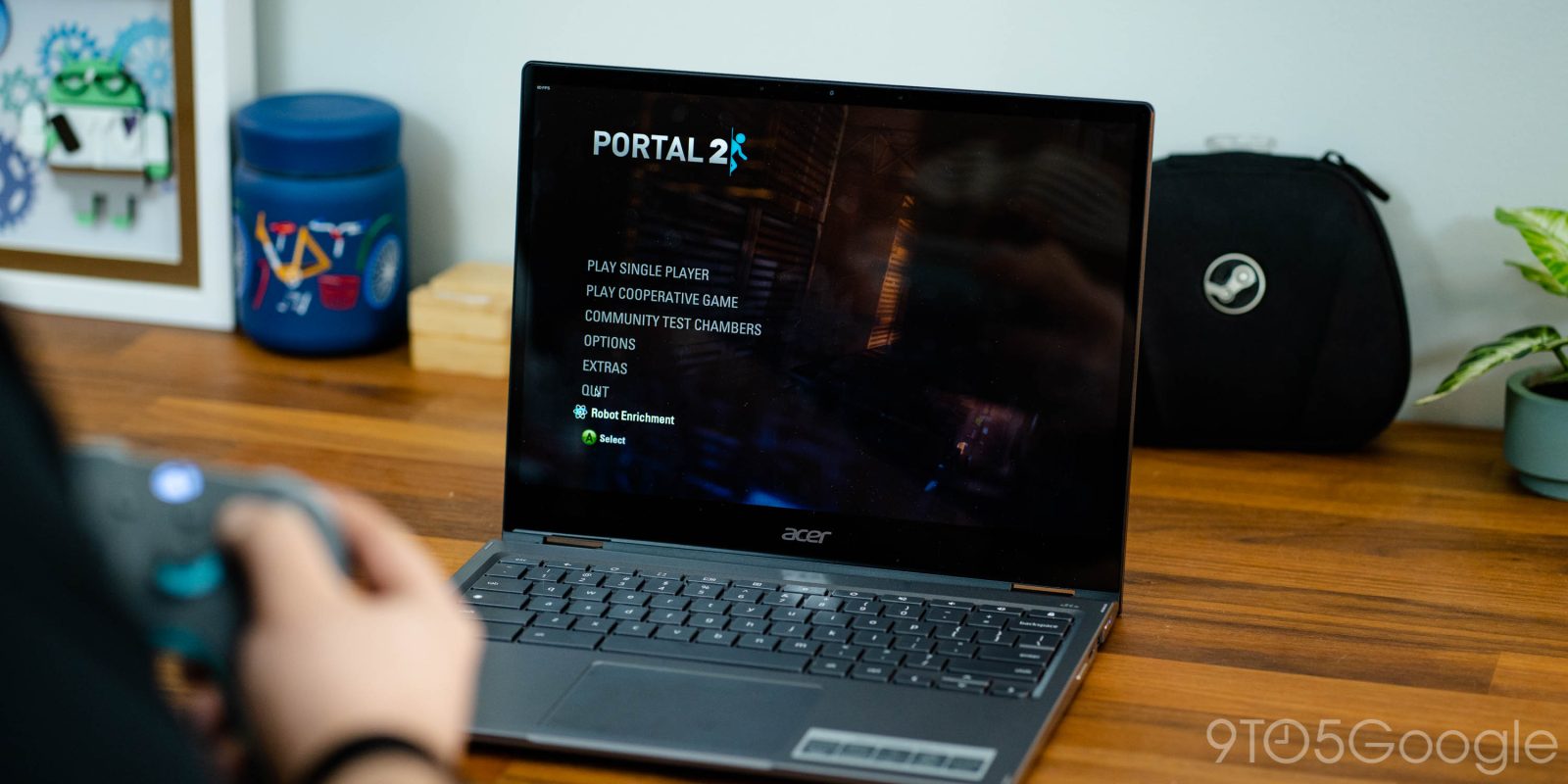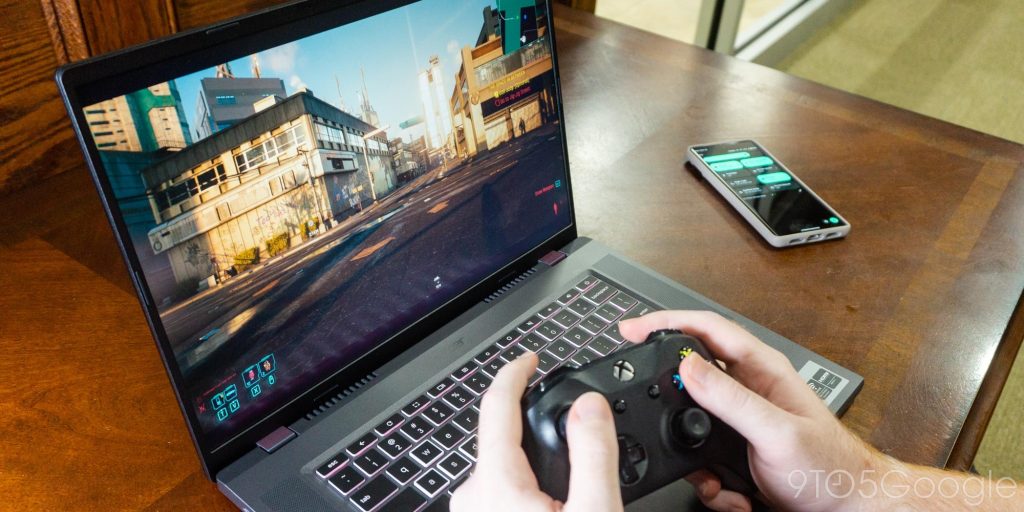
Google is continuing its push for gaming Chromebooks, with the next generation set to bring dedicated Nvidia RTX graphics cards.
Gaming on ChromeOS today
Last year, Google announced a major push for gaming on ChromeOS, including unveiling multiple gaming-focused Chromebooks. Despite what that focus might imply about the hardware, these laptops were best suited to the needs of cloud gaming as they lacked any dedicated graphics hardware.
However, Google has made it clear that the cloud is not the only intended path to gaming on ChromeOS (especially so, given the demise of Stadia). For years, Google and Valve have worked to get Steam up and running on ChromeOS, allowing higher-end models to play locally downloaded games.

At any other time, this would have seemed like a fool’s errand, but the PC gaming market has begun to shift thanks to the popularity of the Steam Deck. All of the same software that allows the Steam Deck to run games well also directly benefits Chromebooks as both are based on Linux instead of Windows. Any developer who puts in the work to make their game “Deck Verified” has also essentially optimized the game for ChromeOS.
That said, the high-end gaming Chromebooks we have today primarily get their “gaming” distinction based on nice-to-have features like a higher refresh rate for the display and anti-ghosting for the RGB keyboard. On the inside, it’s mostly the same Intel-based hardware that you’d find in a premium, work-ready Chromebook.
These laptops can play Steam games, but you’ll likely want to stick to titles that are less graphically demanding. Google has provided an example list of games that it’s tested on Chromebooks, primarily consisting of older 3D titles and newer indie games, as well as a few somewhat modern titles like DOOM (2016).
Nvidia RTX graphics in a Chromebook
Luckily, Google is addressing this directly by making it possible for ChromeOS hardware to include a dedicated Nvidia RTX graphics card. This effort has been ongoing for over a year as there were numerous factors to consider. For starters, since Steam gaming on ChromeOS happens in a virtual machine (or VM), Google needed to ensure the VM has direct access to the graphics card for maximum performance.
The company’s efforts were initially focused on hardware called “Draco” or “Agah.” From what we’ve been able to uncover, this was an internal prototype based on Intel’s 12th-generation (Alder Lake) processors and included Nvidia RTX 3050 graphics hardware.
Early this year, the company shifted its focus to new foundational hardware codenamed “Hades.” Crucially, according to a developer comment viewed by 9to5Google, where Agah was only meant to be a prototype, Hades will be used in real, retail Chromebooks. That being the case, let’s take a look at what the first Chromebooks with Nvidia graphics will have to offer.

For starters, Hades serves as a foundation for OEMs to build upon, and so far two such Chromebooks have cropped up – “Cora” and “Zeus.” No specifics have cropped up for these models, meaning we can look to Hades for more details.
Hades-based Chromebooks will be built on Intel’s 13th-generation (Raptor Lake) chips and paired with Nvidia’s RTX 4050 graphics card. As that particular model has not yet been announced, we don’t know exactly how well it will perform, but it would presumably be comparable to the existing RTX 3050, generally found in sub-$1000 gaming laptops.
These gaming Chromebooks will also feature newer DDR5 RAM, and according to one code change, the RAM will not be soldered down. If this holds true, it would be possible to upgrade your gaming Chromebook’s RAM down the line, if you see fit.
Google is also fitting these two gaming models with a pair of unique features not seen on other Chromebooks today. First, at least one USB-C port will support the new “Extended Power Range” (EPR) standard that allows for as much as 240 W of power to be carried over USB-C.
Combined with that, Google is including a way for your Chromebook to “bypass” the battery and run directly on the incoming power from the charger. This would be perfect for reducing heat and preserving the long-term health of the laptop’s battery when you’re gaming somewhere with a reliable power source.
Who is it for?
In all, it seems Google and Nvidia have put in quite a bit of work to make gaming on ChromeOS more feasible than ever. With the help of a dedicated graphics card – and the extra power needed to operate it – these new Chromebooks could be surprisingly competent for playing games while on the go.
That said, we’re not yet sure what market Google and its OEM partners are hoping to capture with these laptops. Those who are already familiar with PC gaming would likely continue using Windows-based devices. Instead, perhaps Google intends to introduce Chromebook owners to the world of PC gaming.
As this new generation of hardware seems to have only gotten underway in the last three months, we don’t currently expect to see these gaming Chromebooks with Nvidia graphics released anytime too soon.
Would you consider using a gaming-ready Chromebook? Let us know in the comments below.
FTC: We use income earning auto affiliate links. More.



Comments